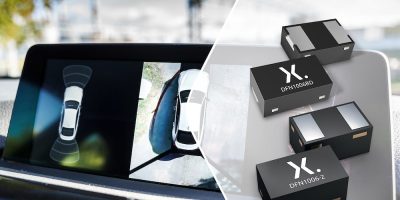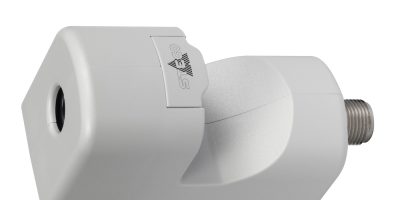Nexperia has expanded its portfolio of low capacitance ESD protection diodes for high speed data lines. All variants are in leadless packages to improve electrical performance and signal integrity while enabling miniaturisation in automotive designs.
The PESD18VF1BLS-Q, PESD24VF1BLS-Q, PESD30VF1BLS-Q and PESD32VF1BLS-Q are supplied in DFN1006BD-2 packages for optical inspection in automotive production lines using side wettable flanks and the PESD18VF1BBL-Q, PESD24VF1BBL-Q and PESD30VF1BBL-Q are available in the compact DFN1006-2 package.
Target applications are in interfaces such as USB, HDMI, high-speed video links and Ethernet in automotive infotainment applications. Adding additional components to a high-speed data line can deteriorate the signal integrity of the transferred data. Therefore, choosing the right components that protect the system but do not hamper the signal transmission is vital to modern high-speed automotive systems, explained Nexperia. The signal integrity performance of the diodes is enabled by the low device capacitance (as low as a typical 0.28 pF) combined with the higher standoff voltage of 18 to 32V for placement closer to the connector. For maximum design flexibility, these diodes are offered both with and without side wettable flanks, with the side wettable flanks enabling automated optical inspection (AOI).
These AEC-Q101 automotive-qualified devices exhibit extremely deep snapback behaviour combined with a low dynamic resistance of 0.8 Ohm for improved system-level robustness and clamping performance in high-speed data interfaces.
Headquartered in the Netherlands, Nexperia is a global semiconductor company with employees across Europe, Asia, and the United States. It says it develops and produces essential semiconductors which enable the basic functionality of virtually every electronic design in the world from automotive and industrial to mobile and consumer applications.
The company has an extensive IP portfolio and certification to IATF 16949, ISO 9001, ISO 14001 and ISO 45001 standards.






